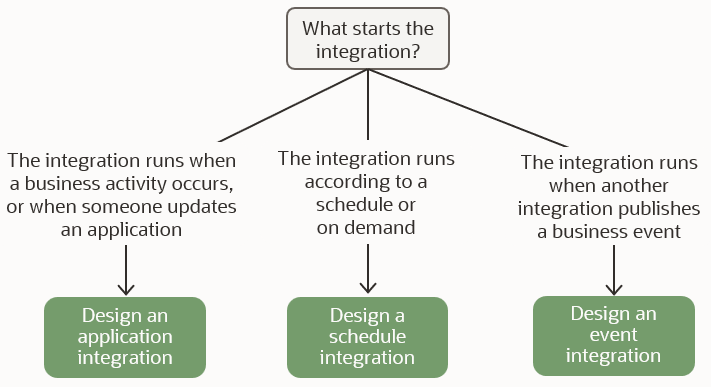Understand Integration Styles
You can select from several styles when creating an integration in the Create integration panel.
What Kind of Integration Should You Design?
When you create an integration, the first decision to make is the integration model to use. The main difference among the models is the way that they start running.

Available Integration Styles
| Style | Description |
|---|---|
|
Application |
Create an application integration (previously known as app-driven orchestration) that uses an event or a business object to trigger the integration. For example, you create an integration with an Oracle Service Cloud (RightNow) Adapter as a trigger and an Oracle CX Sales and B2B Service Adapter as an invoke. The Oracle Service Cloud (RightNow) Adapter subscribes to an event from the Oracle CX Sales and B2B Service application to trigger the integration. Application integrations include many actions for performing specific tasks, such as the following:
See About Application Integrations and Create Application Integrations. |
|
Schedule |
Create an integration that uses a schedule to trigger the integration instead of an adapter. For example, you add an initial invoke adapter to read a trigger file and a second FTP adapter to download the file for further processing. After designing this integration, you schedule when to run it. See About Schedule Integrations and Create Schedule Integrations. |
| Event |
Create and select events for publishing and subscribing to in integrations. You define the events in JSON-formatted or XML schema files. Note: If you created integrations using the Publish to OIC and Subscribe to OIC integration styles (often called pub/sub) in Oracle Integration Generation 2, these capabilities and more are available in Oracle Integration 3. To create an integration that publishes an event, create an application integration. To create an integration that subscribes to published events, create an event integration. See About Event Integrations Create Event Integrations. |